WFP at a Glance
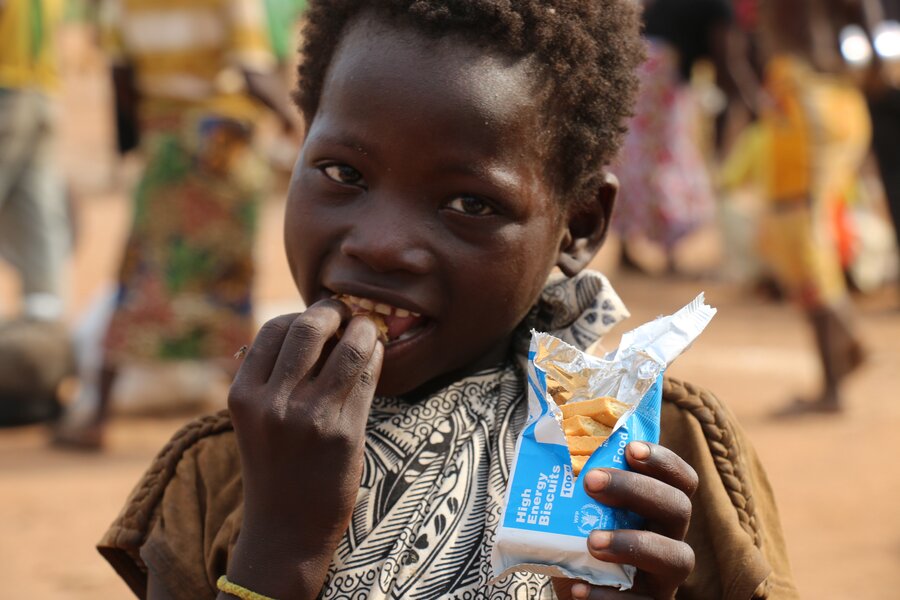
About WFP
WFP’s operational requirements for 2023 stood at US$23.5 billion, while forecasted funding for 2023 was just US$10 billion. (As of 14 December 2023).
WFP reached 160 million people in 2022, with a presence in over 120 countries and territories. WFP is among the first on the scene in an emergency, providing food and other assistance to people affected by conflict, drought, floods, earthquakes, hurricanes and crop failures, as well as pandemics such as COVID-19. At the same time, we keep a sharp focus on sustainable development, providing governments with the support and skills to manage food security in the long term.
Funding shortfall and ration cuts
Total contributions in 2022: US$14.1 billion (a record). Total budgetary needs: US$21.4 billion
WFP is in the midst of a crippling and historic funding crisis that is forcing the organization to scale back life-saving assistance at a time when acute hunger is at record levels. Almost half of WFP country operations have already cut the size and scope of food, cash and nutrition assistance because of a major drop in funding. Cutting assistance at this moment will have untold consequences for millions of people and jeopardize years of work fighting hunger and malnutrition. These tough decisions are not unique to WFP. They reflect the new and more challenging financial landscape that the entire humanitarian sector is navigating.
Quick facts
- WFP is funded entirely by voluntary donations, with a record US$14.1 billion raised in 2022.
- More than 50 percent of the people WFP serves are women and girls.
- 1 metric ton of food, typically including cereals, pulses and oil, is sufficient for approximately 1,660 people for one day – meeting their minimum daily energy intake of 2,100 kcal as well as their vitamin and mineral needs.
- WFP has around 24,000 staff, of whom 87 percent are field-based.
A global hunger crisis
Up to 783 million people – one in ten of the world's population – suffer from chronic hunger. WFP estimates – from 78 of the countries where we work and where data is available – that more than 333 million people are facing acute levels of food insecurity in 2023, and do not know where their next meal is coming from. This constitutes a staggering rise of almost 200 million people compared to pre-COVID-19 pandemic levels.3. Without urgent life-saving action, they are at risk of falling into catastrophe or famine conditions. Furthermore, 45 million children under 5 years of age are estimated to suffer from acute malnutrition.
A deadly combination of conflict, economic shocks, climate extremes and soaring fertilizer prices is at the root of soaring numbers. The economic fallout of the COVID-19 pandemic, and then the war in Ukraine, has pushed prices up and put food out of reach for millions of people across the world. At the same time, high fertilizer prices are causing a falling production of maize, rice, soybean and wheat.
These rising costs are also affecting WFP’s work. Inflation, supply chain disruption and other factors have increased WFP's operating costs, hampering our ability to assist people at a time when they need it most.
While Asia is home to the greatest number of undernourished people at 418 million, Africa is the region with the highest prevalence of undernourishment in percentage terms, at 21 percent. This is more than double the rate in all regions, according to the latest edition of the State of Food Security and Nutrition in the World. See also: A global food crisis
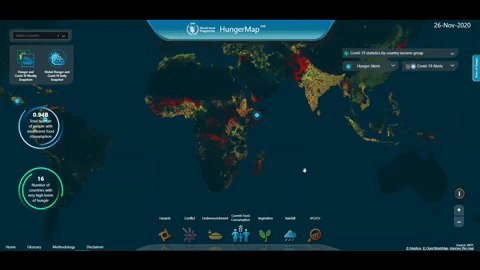
Millions at risk without urgent assistance
The latest Hunger Hotspots report issued an urgent early-warning alert for humanitarian action in 18 hotspots where millions were expected to face worsening food insecurity from November 2023 to April 2024, unless they received immediate assistance.
Humanitarian action is critical in preventing starvation and death, particularly in the highest alert hotspots. However, the report also highlights how humanitarian access is constrained by funding shortfalls, insecurity, bureaucratic barriers and movement restrictions.
n addition to Palestine – now added to the countries of highest concern – other countries highlighted at greatest risk of a serious deterioration in food security and possible starvation are Burkina Faso, Mali, South Sudan and the Sudan.
Main areas of work
Emergency response* and preparedness
WFP is the frontline agency responding to emergencies caused by conflict, climate shocks, pandemics and other disasters. We also coordinate responses to large-scale emergencies on behalf of the wider humanitarian community, as lead agency of the Logistics Cluster and the Emergency Telecommunications Cluster. Our focus is also on emergency preparedness, working with partners to provide early warning and helping communities lessen the impact of looming disasters.
- Each day WFP has up to 6,500 trucks, 140 aircraft and 20 ships on the move, delivering food and other assistance.
(*See also ‘Current emergencies' section below)
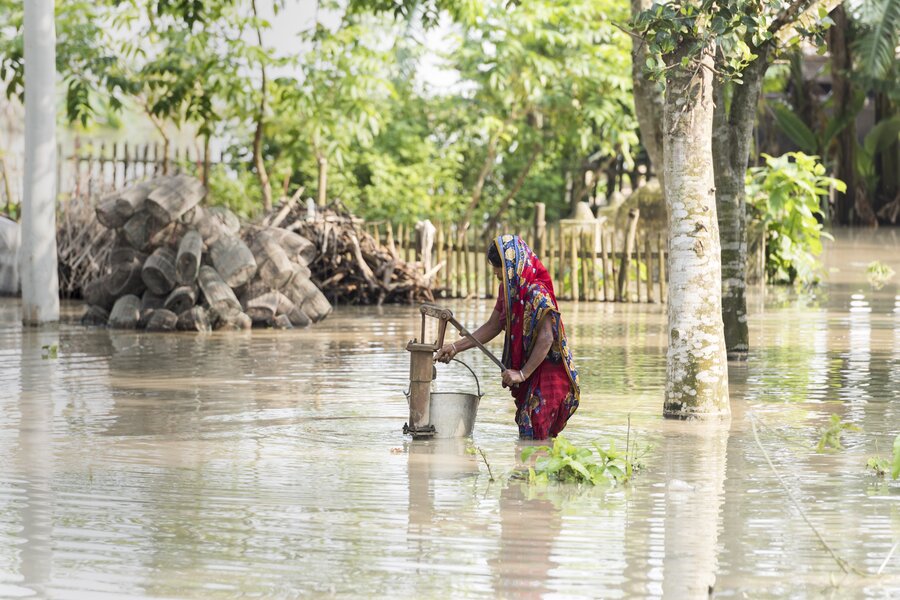
Climate action
Climate shocks such as droughts and floods can wipe out crops, disrupt markets and destroy roads and bridges. WFP is working with governments and humanitarian partners on the frontlines, responding to an increasing number of disasters. At the same time, we take pre-emptive action which reduces the number of people needing humanitarian assistance.
WFP deploys Forecast-based Financing to provide cash to vulnerable families, allowing them to buy food, reinforce their homes and take other steps to build resilience ahead of climate disasters. This approach was used ahead of torrential rains in Bangladesh.
- WFP assisted more than 15 million people in preparing for or mitigating climate-related shocks in 2022, and arranged insurance for people in 14 countries against crop and other losses due to weather extremes.
Nutrition
Sustainable development is only possible in communities where malnutrition is eradicated and future generations can flourish. WFP has broadened its focus in recent years from emergency interventions to addressing all forms of malnutrition including vitamin and mineral deficiencies, and overweight and obesity.
WFP addresses malnutrition from the earliest stages through programmes targeting the first 1,000 days from conception to a child's second birthday. We provide access to healthy diets, targeting young children, pregnant and breastfeeding women and people living with HIV.
- WFP reached more than 28 million people – mainly mothers and children – with malnutrition treatment and prevention programmes in 2022. This included 2 million mt of fortified foods, up 39 percent from 2021.
School-based programmes
WFP is the largest humanitarian organization implementing school feeding. School meals improve children's nutrition and health, while also increasing access to a potentially life-changing education. Home-grown school feeding sources food from millions of smallholder farmers, increasing their incomes and boosting local economies.
WFP and UNICEF are joining forces under a renewed commitment to millions of vulnerable children. The initiative will focus on supporting governments in adopting an integrated approach to schoolchildren's nutrition and health, incorporating school feeding, nutrition, deworming, and water, sanitation and hygiene.
- WFP worked with governments to reach 20 million schoolchildren in 59 countries with nutritious school meals, take-home rations or snacks in 2022. A total 49 percent of those reached were girls.
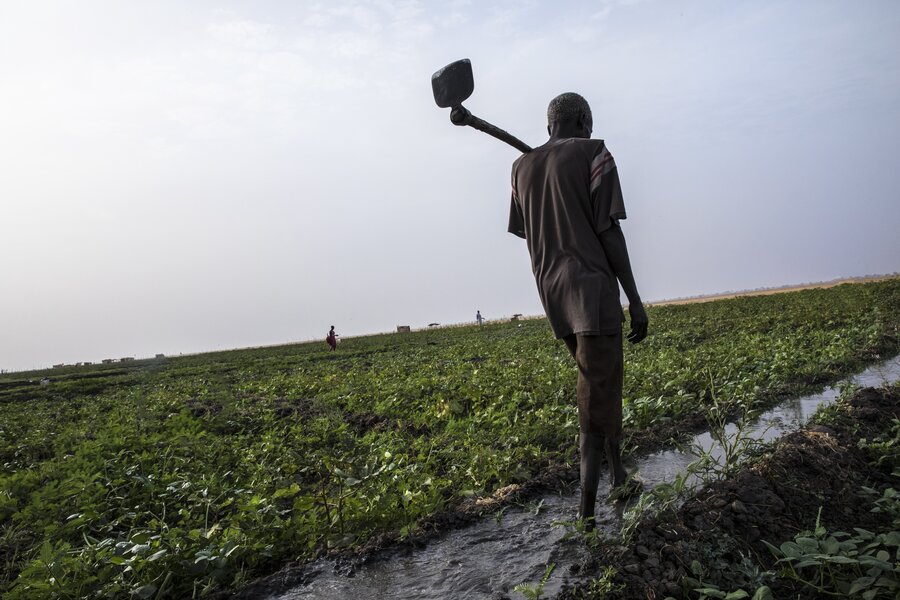
Smallholder farmers
Smallholder farmers produce most of the world's food and are critical in achieving a zero-hunger world. WFP's support to farmers spans a range of activities to help build sustainable food systems, from business-skills training to opening up roads to markets.
- WFP and partners supported more than 947,000 smallholder farmers in 44 countries in 2021.
- WFP procured 117,000 metric tons of food valued at US$51.9 million from smallholder farmers in 27 countries in 2021.
Resilience
WFP's Food Assistance for Assets programme improves the prospects for long-term food security, while helping create conditions for peace. People receive food or cash to meet immediate food needs, which frees up their time for working on community assets or livelihood resources that can increase resilience to climate change and improve access to markets.
- WFP provided food assistance for 8.7 million people through food assistance for assets activities in 2021.
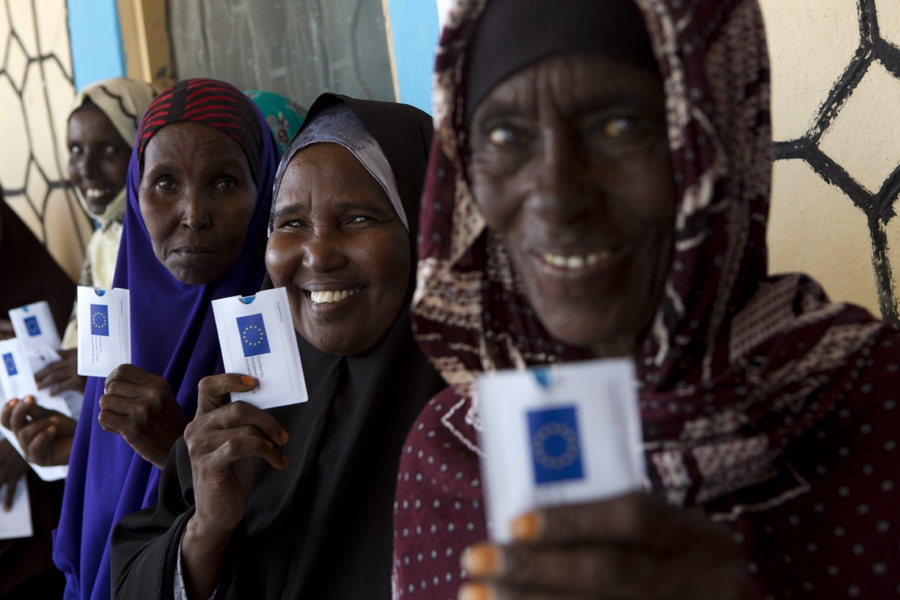
Cash assistance
WFP is the largest cash provider in the humanitarian community. Cash allows for increased food choices and diet diversity for beneficiaries while boosting local smallholder production, retail and the financial sector.
- Over US$3 billion was provided to people in 72 countries through cash or vouchers in 2022, an increase of 42 compared to 2021.
Capacity building
Through its Country Strategic Plans, WFP is transferring its skills and knowledge to a range of public, private and civil society actors who are pivotal to sustaining national policies and programmes. We are building governments' and other partners' capacities to manage disaster risk and improve food security, while also investing in early warning and preparedness systems for climate and other threats.
- WFP is training government staff in Ethiopia in the use of drones for activities such as mapping flood-risk zones and assessing damage to crops after disasters — building their abilities to deploy the technology without WFP's assistance.
- In Bangladesh, we provided training to staff from the NGO Social Assistance and Rehabilitation for the Physically Vulnerable, so they could implement a community-based nutrition project.
Nobel Peace Prize
The award of the Nobel Peace Prize to WFP in October 2020 reflects our strong advocacy for the critical role of peace in ending hunger, and for the use of food as a tool for peace. Conflict and insecurity are key drivers of hunger. Many of the people WFP supports are fleeing conflict, and have been forced to abandon their land, homes and jobs. This award increases WFP's opportunity to provide a stronger voice to hungry people in the world, and to mobilize support for the food assistance that they need.
Digital innovation
New technologies and innovation help drive WFP’s work to achieve zero hunger by 2030.
WFP's Munich-based Innovation Accelerator identifies new ideas, pilots projects and scales up high-impact innovations. It has supported more than 125 projects globally, with 22 of these scaling up through WFP’s field operations. A total of 37 million people in 88 countries benefited from innovative solutions in 2022.
Read the WFP Innovation Accelerator's 2022 Year in Review for more information.
- Building Blocks – The world’s largest implementation of blockchain technology. In Bangladesh and Jordan, it has processed US$529 million worth of transfers via 23 million transactions, saving US$3 million in bank fees. In Ukraine, it has coordinated US$337 million of assistance from 18 humanitarian organizations, saving US$35 million.
- HungerMap LIVE – Enables internet monitoring of food security in vulnerable, hard-to-reach communities, in near real-time, in up to 60 countries. Collates publicly available macroeconomic data and information on food security, nutrition, conflict, hazards and weather.
- Optimus – Applies advanced analytics that allows field staff to quickly compare operational plans and identify the most cost-effective means to assist people. Used in over 44 country offices, resulting in over US$50 million of savings since 2015.
In conjunction with the Innovation Accelerator, WFP's country offices, regional bureaux and business units have established regional innovation hubs in Eastern Africa (Kenya), and Latin America and the Caribbean (Colombia), and innovation units within the Jordan, Kenya, Tanzania and South Sudan country offices.
Current emergencies
Afghanistan: A humanitarian crisis of incredible proportions has grown even more complex and severe since the Taliban took control. Job losses, lack of cash and soaring prices are creating a new class of hungry people. Read more
The Democratic Republic of the Congo: DRC is facing one of the world's largest hunger crises. According to the latest Integrated Food Security Phase Classification, an estimated 23.4 million people are experiencing crisis and emergency levels of food insecurity, including 5.4 million people in the three eastern provinces of Ituri, North Kivu and South Kivu. Read more
Ethiopia: Since operations resumed in mid-November, WFP convoys have carried thousands of tons of food into the Tigray Region, allowing us to reach those most in need of our assistance. WFP is supporting 2.1 million people in the region with food assistance. Read more

Haiti: Hunger is tightening its grip on vulnerable Haitians in a deepening humanitarian crisis. The complex emergency situation across the country – which has one of the highest levels of food insecurity in the world – has been compounded by insecurity, violence, deepening economic woes and a cholera outbreak. Read more
Myanmar: Hunger and the need for humanitarian assistance has grown even more complex and severe across Myanmar, with the triple impact of pre-existing poverty, COVID-19 and the current political crisis. Read more
North Eastern Nigeria: Conflict is affecting the lives and livelihoods of millions of people in Borno, Yobe and Adamawa states in northeast Nigeria. A total 4.4 million people are facing acute hunger and 320.000 children are suffering from acute malnutrition. Read more
Sahel: Rising armed conflict, deteriorating security, widespread poverty and the impact of climate change are posing a real threat to countries in the Central Sahel, namely Burkina Faso, Mali and Niger. Read more
Somalia: Food security in Somalia has improved since the peak of the drought in 2022, but the country is still facing the highest levels of hunger it has suffered in over a decade, with climate extremes devastating communities who are still battling to recover from the country’s longest recorded drought. /Read more
South Sudan: South Sudan is simultaneously drowning and drying as the climate crisis tightens its grip. An unprecedented flooding crisis has swallowed large swathes of the country while other parts are grappling with devastating drought. See also: Read more
State of Palestine: A sharp escalation of the conflict in and around Palestine has left the entire population of 2.2 million people in crisis or worse levels of acute food insecurity. People face mounting challenges in accessing essential food supplies, with distribution networks disrupted and production severely hampered. Read more
Sudan: Sudan is facing a rapidly deepening crisis as war rages across the country, with nearly 18 million people facing acute hunger. Of these, nearly 5 million people are in emergency levels of hunger. Read more
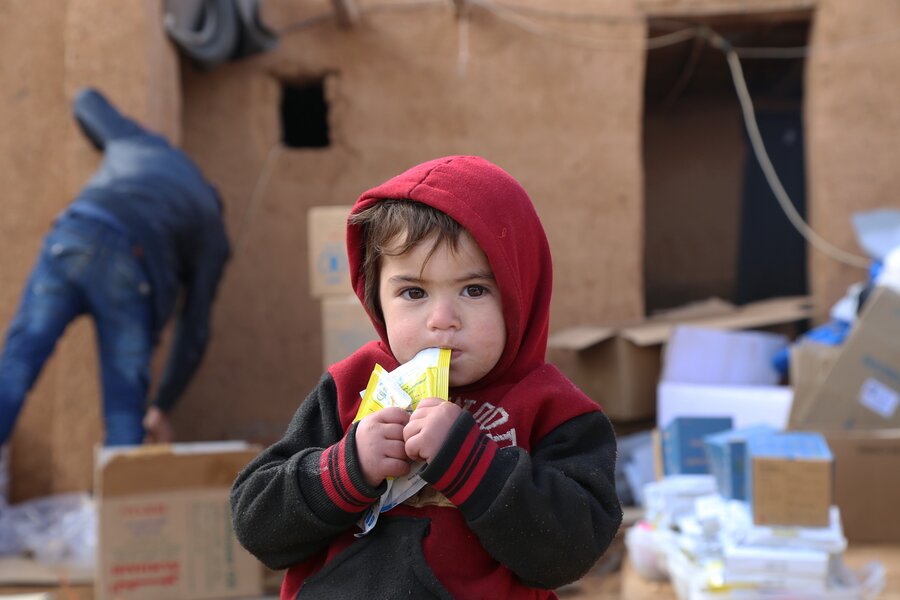
Syria: WFP estimates that 12.9 million Syrians – more than half the population – are in the grip of hunger, as protracted conflict combines with other drivers including record inflation and shocks including earthquakes. Read more
Ukraine: The war in Ukraine continues to displace people, damage infrastructure, disrupt supply chains and hold back the country’s economy. One in five households is estimated to be food-insecure. Read more
Yemen: While diplomatic efforts point to hopes for peace in Yemen, the humanitarian situation in the country remains dire with nearly 17 million people experiencing high levels of food insecurity. Read more
UNHAS
WFP Aviation manages the only UN-mandated air transport service, the United Nations Humanitarian Air Service (UNHAS). The service connects the entire humanitarian and development community to people in need, reaching the most remote and dangerous locations on earth. It also ensures an uninterrupted delivery of supplies when other transport is disrupted by insecurity or damaged roads or other infrastructure, and where almost no other commercial airline is flying.
UNHAS served 400 regular destinations in 23 countries facing crises and emergencies in 2020, operating more than 100 aircraft. The service supported the global response to COVID-19, including providing a Medical Evacuation Service and transporting medical cargo and staff.
Latest information and resources: A hunger catastrophe, WFP - saving lives, preventing famine; 12 things you didn't know about the World Food Programme, Overview, Hunger, Conflict, and Improving the Prospects for Peace, Emergency Response and Preparedness, Humanitarian Development (factsheets), wfp.org
